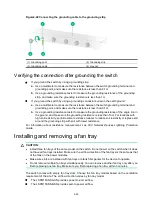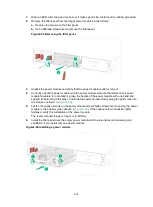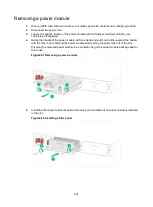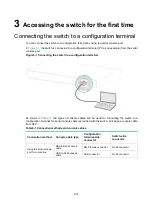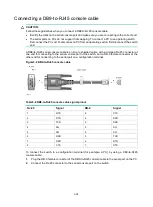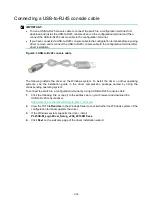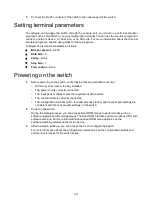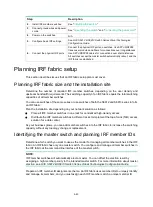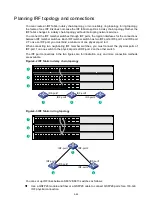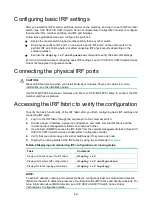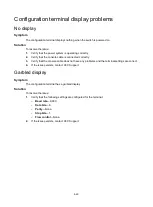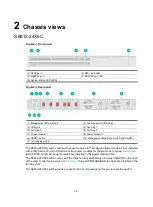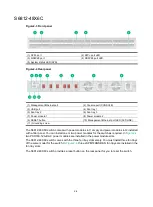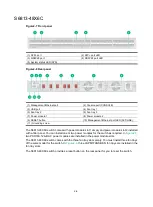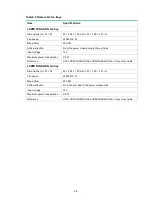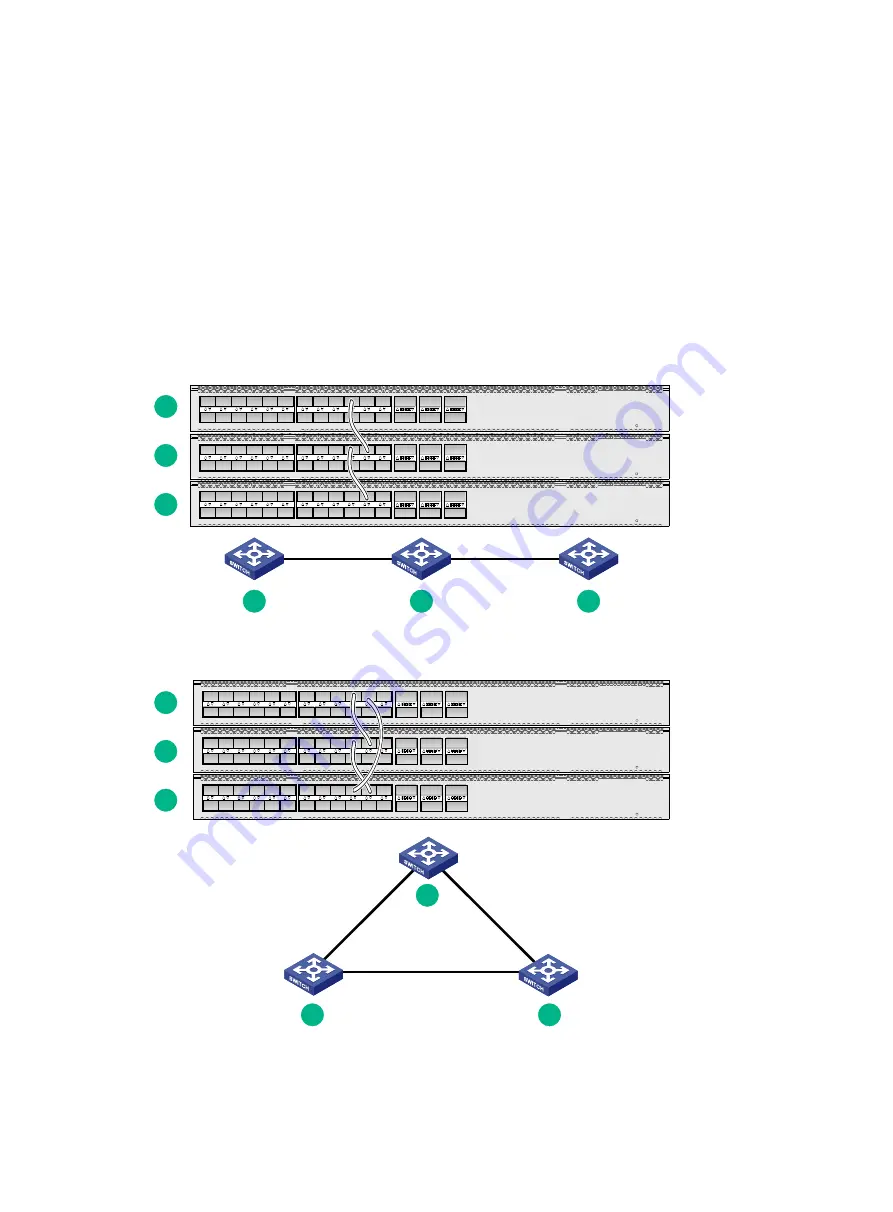
4-44
Planning IRF topology and connections
You can create an IRF fabric in daisy chain topology, or more reliably, ring topology. In ring topology,
the failure of one IRF link does not cause the IRF fabric to split as in daisy chain topology. Rather, the
IRF fabric changes to a daisy chain topology without interrupting network services.
You connect the IRF member switches through IRF ports, the logical interfaces for the connections
between IRF member switches. Each IRF member switch has two IRF ports: IRF-port 1 and IRF-port
2. To use an IRF port, you must bind a minimum of one physical port to it.
When connecting two neighboring IRF member switches, you must connect the physical ports of
IRF-port 1 on one switch to the physical ports of IRF-port 2 on the other switch.
The IRF port connections in the two figures are for illustration only, and more connection methods
are available.
Figure4-2 IRF fabric in daisy chain topology
Figure4-3 IRF fabric in ring topology
You can set up IRF links between S6812/S6813 switches as follows:
•
Use a QSFP28 module and fiber or a QSFP28 cable to connect QSFP28 ports for a 100-GE
IRF physical connection.
1
2
3
IRF-port1
IRF-port2
IRF-port1
IRF-port2
1
2
3
1
2
3
IRF-port1
IRF-port2
IRF-port1
IRF-port1
IRF-port2
IRF-port2
2
3
1

